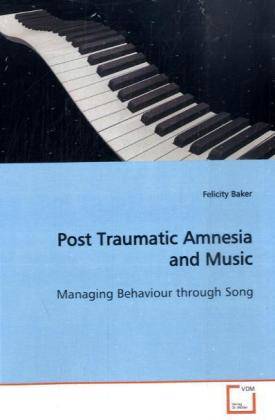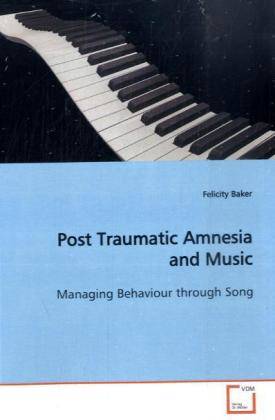
- Afhalen na 1 uur in een winkel met voorraad
- Gratis thuislevering in België vanaf € 30
- Ruim aanbod met 7 miljoen producten
- Afhalen na 1 uur in een winkel met voorraad
- Gratis thuislevering in België vanaf € 30
- Ruim aanbod met 7 miljoen producten
Zoeken
€ 58,45
+ 116 punten
Omschrijving
Observing highly agitated, disoriented and
distressed young adults experiencing posttraumatic
amnesia is emotionally difficult for the family to
witness, and problematic for staff managing them in
acute hospital wards. Neurorehabilitation
practitioners consider management of posttraumatic
amnesia is best achieved by limiting the amount of
stimuli they are exposed to. Consequently music
during posttraumatic amnesia is considered
contraindicated. This book offers an alternative
perspective by showing how familiar and
stylistically simple music reduces agitation and can
improve orientation in 22 people during this phase
of recovery. The effects are explained in terms of
how patient preferred music creates a more familiar
environment, which encourages interaction with
reality. The findings are discussed in the context
of arousal theory and provide new evidence that
music is not contraindicated if used appropriately.
In fact, the results of the study show that highly
agitated people in posttraumatic amnesia can display
reduced levels of agitation when their preferred
music is played to them.
distressed young adults experiencing posttraumatic
amnesia is emotionally difficult for the family to
witness, and problematic for staff managing them in
acute hospital wards. Neurorehabilitation
practitioners consider management of posttraumatic
amnesia is best achieved by limiting the amount of
stimuli they are exposed to. Consequently music
during posttraumatic amnesia is considered
contraindicated. This book offers an alternative
perspective by showing how familiar and
stylistically simple music reduces agitation and can
improve orientation in 22 people during this phase
of recovery. The effects are explained in terms of
how patient preferred music creates a more familiar
environment, which encourages interaction with
reality. The findings are discussed in the context
of arousal theory and provide new evidence that
music is not contraindicated if used appropriately.
In fact, the results of the study show that highly
agitated people in posttraumatic amnesia can display
reduced levels of agitation when their preferred
music is played to them.
Specificaties
Betrokkenen
- Auteur(s):
- Uitgeverij:
Inhoud
- Aantal bladzijden:
- 128
- Taal:
- Engels
Eigenschappen
- Productcode (EAN):
- 9783639150735
- Uitvoering:
- Paperback

Alleen bij Standaard Boekhandel
+ 116 punten op je klantenkaart van Standaard Boekhandel
Beoordelingen
We publiceren alleen reviews die voldoen aan de voorwaarden voor reviews. Bekijk onze voorwaarden voor reviews.








